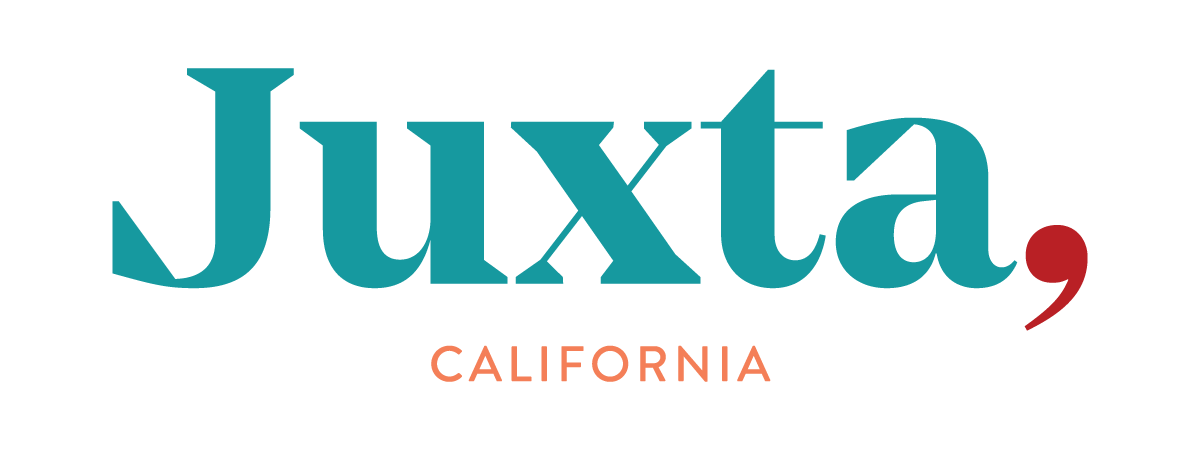bipolar disorder
COUNSELING
 Arturo had always considered himself to be a happy-go-lucky kind of guy. He loved hanging out with his friends, going out to eat, and playing video games in his free time. Lately, however, his moods have been all over the place. One minute he’s laughing and having a great time, and the next he’s sad and withdrawn. He’s noticed that this pattern has been going on for a few weeks now, and he’s worried that it’s something more serious than just a passing mood swing. He’s never really talked to anyone about his feelings before, but he’s starting to think that he might need to see someone about what’s been going on.
Arturo had always considered himself to be a happy-go-lucky kind of guy. He loved hanging out with his friends, going out to eat, and playing video games in his free time. Lately, however, his moods have been all over the place. One minute he’s laughing and having a great time, and the next he’s sad and withdrawn. He’s noticed that this pattern has been going on for a few weeks now, and he’s worried that it’s something more serious than just a passing mood swing. He’s never really talked to anyone about his feelings before, but he’s starting to think that he might need to see someone about what’s been going on.
Brittany has always had a lot of energy. She’s the kind of person who loves to be the center of attention and works hard to achieve her goals. Lately, though, she’s noticed that her energy levels have been through the roof. She’s been having trouble sleeping and finds herself feeling irritable and agitated all the time. What’s more, usually after the very height of feeling up, she crashes downward and feels depressed for several weels. She’s worried that her behavior is starting to affect her relationships and her work, and she’s starting to feel like she’s losing control.
Avery has always struggled with depression. They’ve been on medication for years and sees a therapist once a week. While this helps, Avery is also aware that there is a side to their behavior that often doesn’t seem as easily explainable because it actually isn’t too problematic. That is to say, when Avery isn’t feeling depressed, they are often incredibly driven and goal-focused. While they’re rewarded for this at work, it too feels abnormal and almost like the opposite end of their depressive streaks. They’re starting to question whether their current treatment approach is enough.
Bipolar Disorder Defined:
According to the National Institute of Mental Health reports, less than 3% of adolescents and around 2.6% of adults in the United States of America have Bipolar Disorder. Furthermore, researchers are beginning to study children with symptoms of early-onset Bipolar Disorder, which is particularly relevant given that some studies have found that people with bipolar disorder who also have a history of childhood trauma had more severe symptoms and were more likely to attempt suicide than those without a history of trauma (Miklowitz et al., 2018).
From a clinical perspective Bipolar Disorder can be somewhat difficult to describe for at least two reasons: a) because of the nature of the disorder, and b) because so many portrayals of bipolar disorder in popular culture such as movies and TV-shows often paint an inaccurate picture.
To gain clarity, it may help to start out by noting that Bipolar Disorder was once known as “manic-depression.” While terminology is no longer considered socially acceptable and in fact may have been stigmatizing to some degree, it was helpful in that it described the two “poles” (from which we get the term “bipolar”) that those who are suffering from the disorder display — i.e., individuals experience intense activity (manic episodes or mania) on one end of the spectrum, and at the other, they experience periods of significant emotional lows (depressive episodes or depression).
But wait — two kinds of bipolar disorder?
That’s correct — although it may not commonly be known due to misportrayals of bipolar disorder in popular media and/or simple unawareness/lack of information, there are in fact two kinds of bipolar disorder. Each type is best understood by looking at the severity and duration of the episodes expeirenced. Generally speaking, movies and television shows show Bipolar Type I. This is likely because the more extreme elements of manic phases are thrilling to display, even if they are horrendous to go through — manic episodes can be over the top, highly dramatic, and even dangerous. That siad, Bipolar Type II is also frequently experienced in our culture as well, but may be harder to see because of the less severe nature of its mania (called “hypomania”).
Bipolar Type II is similar to Type I, but without extreme manic episodes. Instead, individuals experience what are known as hypomanic episodes or hypomania (hypo = below or less severe), alongside the classic Type I depressive episodes. Hypomanic episodes are essentially a less severe form of mania, and often do little to impair function or decrease quality of life. In fact, they are often experienced positively as an increase in one’s drive toward productivity and creativity.
Here’s a brief look at each type with more depth:
 Bipolar I
Bipolar I
Disorder is diagnosed when a person has experienced at least one manic episode. A manic episode is defined by the DSM-5 as a distinct period of at least one week where a person experiences an elevated or irritable mood, increased energy or activity, and a decreased need for sleep, and a depressive episode m Additionally, the episode must cause significant impairment in daily functioning or require hospitalization.
Bipolar Type I is the most severe of all the Bipolar Disorders. At times, there may be a mixing of manic and depressive symptoms.
Manic episodes usually include:
- Sharp increase in talkativeness Larger amounts of energy than normal The inability to sleep or quiet their mind Feelings of tension, distress, or frustration Extreme increase in efforts to achieve a goal, including the belief that one can achieve more in a set period than possible (The desire to engage in) Risky behaviors such as drug use, unprotected sex, compulsive purchases, etc. Depressive episodes typically involve: Intense sadness Hopelessness and helplessness Lack of energy, sleepiness, and lethargy An inability to concentrate and remember important things Suicidal Ideation Lack of hunger or insatiable hunger
Bipolar II
Bipolar II Disorder is diagnosed when a person has experienced at least one hypomanic episode and at least one major depressive episode. A hypomanic episode is similar to a manic episode, but it is less severe and does not cause significant impairment in daily functioning or require hospitalization.
Related Disorders
There are several types of disorders that may have overlapping symptoms with Bipolar Disorders, but are distinct and different in other ways:
- Cyclothymic Disorder is pattern of hypomanic symptoms along with depressive symptoms but that happen infrequently and are not severe enough to warrant a diagnosis of either Bipolar Disorder or a Major Depressive Disorder.
- Unspecified Bipolar Disorder is a type of Bipolar Disorder in which an individual’s symptoms fail to meet full criteria but are still significant enough to warrant a mental health diagnosis, and are not better accounted for by another disorder.
- Major Depressive Disorder is a pattern of depressive symptoms but without any of the manic or hypomanic symptoms required to meet criteria for a Bipolar diagnosis.
Portrayals of Bipolar Disorder in Popular Culture
Bipolar disorder has been portrayed in books, movies, and television in many different ways. Some portrayals have been accurate and helpful in increasing awareness and understanding of the disorder, while others have been inaccurate and stigmatizing. One of the more accurate and helpful portrayals of bipolar disorder I can be found in the movie Silver Linings Playbook. The main character, Pat Solatano, has bipolar disorder and struggles to manage his mood swings and relationships with others. The movie depicts the challenges of living with bipolar disorder while also showing that recovery is possible with the right treatment and support.
Common Myths and Misconceptions about Bipolar Disorder
There are many myths and misconceptions about bipolar disorder that contribute to the stigma and misunderstanding surrounding the disorder. One common myth is that people with bipolar disorder have what used to be referred to as “multiple personalities” (now known as Dissociative Identity Disorder, DID). In reality, bipolar disorder is a mood disorder that affects a person’s emotions, not their personality. However, it is possible that the mood swings or behavioral shifts encountered during manic states (vs. hypomanic or depressive states) may be so large that those around the person who is experiencing them may find it to be as though it’s a “completely different person.” But this is not to say that the core personality has been fragmented and produces distinct personalities, as is the case with DID.
Another common misconception is that people with bipolar disorder are always either manic or depressed. In reality, people with bipolar disorder can experience a range of different moods, including euthymia (a normal mood state), hypomania, and mixed states. When properly treated, they can also simply appear very typical — as “middle of the road” as one might in encounter in any other person.
 Steps for Managing Bipolar Disorder
Steps for Managing Bipolar Disorder
While bipolar disorder can be a difficult disorder to live with, there are steps that people can take to successfully manage their symptoms. Some key steps include:
- Seeking professional help from a mental health professional with experience in treating bipolar disorder.
- Taking medication as prescribed by a healthcare provider.
- Engaging in regular therapy to learn coping skills and develop a plan for managing symptoms.
- Maintaining a healthy lifestyle, including regular exercise, a nutritious diet, and getting enough sleep.
Connection to Other Mental Health Issues
Research has shown that bipolar disorder is often comorbid with other mental health issues. One study found that over 90% of people with bipolar disorder also met the diagnostic criteria for another psychiatric disorder, such as an anxiety disorder or substance use disorder (Harvey et al., 2009).
References
Harvey, A. G., Watkins, E., Mansell, W., & Shafran, R. (2009). Cognitive behavioural processes across psychological disorders: A transdiagnostic approach to research and treatment. Oxford University Press.
Miklowitz, D. J., Porta, G., Martínez-Álvarez, M., Gonzalez-Pinto, A., Russo, M., DelBello, M. P., … & Vieta, E. (2018). Family-focused treatment for adolescents with bipolar disorder: A randomized controlled trial. Journal of the American Academy of Child & Adolescent Psychiatry, 57(10), 757-765.
Need some guidance with all of these? We can help!
At Juxta, California counseling, we are aren’t just expert counselors – we’re people too, which means you can expect us to be genuinely interested in you, your story, and your life. We want to get to know the real you. In our work together, honesty with yourself and us comes to characterize the entire healing endeavor. Thus, our relationship itself — that is the work.
There’s nothing else you need to do to prepare. There’s no reason to wait any longer.
Looking for Counseling for Bipolar Disorder?
Reach out today!
Call Us
(858) 227-7719
close. nearby.
alongside.
Location
San Diego, CA
Phone
(858) 227-7719
contact@juxtacalifornia.com

